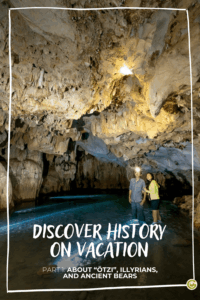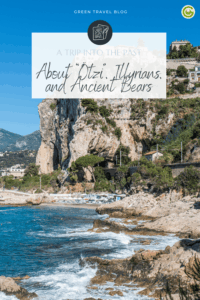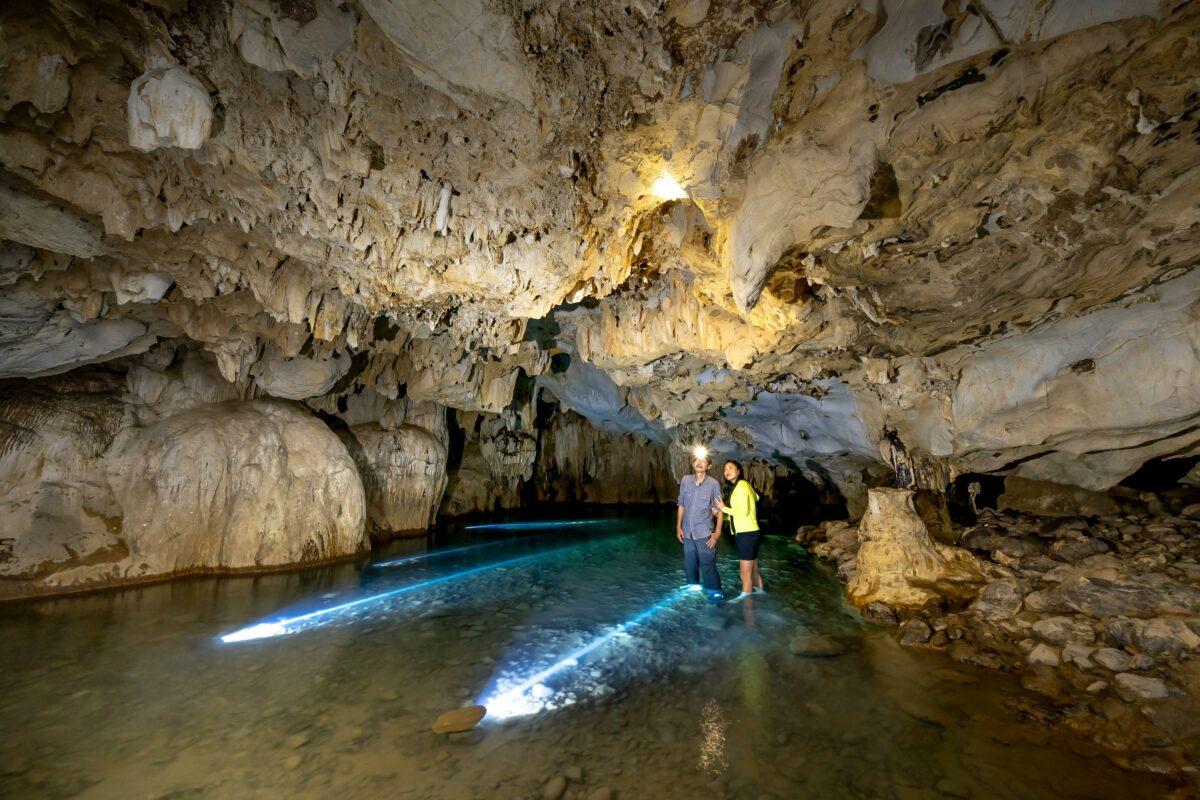„The greatest sight to see is the world—take a look.“
The words of Kurt Tucholsky inspire us to travel to distant lands. However, we are far from being the first people to set foot in these places. While traveling, we encounter historical treasures—impressive testaments to times gone by—and silent memorials that remind us to minimize our ecological footprint.
In this four-part series, we will introduce you to historical treasures located near Green Pearls(Ⓡ )partner hotels. In part one, we explore the 5,300-year-old glacier mummy Ötzi, the Illyrians, the Neanderthals, and traces of 20,000-year-old cave bears.
What the glacier unveils

Let’s start with the hidden stories beneath the “eternal” ice. As you probably know, glacial melt and the subsequent rise in sea levels are two of the biggest problems of our time. These are direct consequences of human-caused climate change.
Fabienne Anthamatten from the Hotel Bella Vista in Zermatt is the perfect person to talk to about this issue. Every year, the Swiss native climbs the Gorner Glacier on the Matterhorn with her family and witnesses the gradual melting of the ice firsthand. She has even made some special discoveries that she has dated. (Learn more in our article on glacier-friendly travel!)

Meet Ötzi the “Iceman”
No glacier find is as world-famous as Ötzi (also known as the Iceman). I, for one, am captivated by him! Ötzi, you wandered this world before the pyramids were built in Egypt, before Moses received the Ten Commandments, and before Jesus rode through the gates of Jerusalem. You lived around 5,300 years ago, before the Mayans or the Incas existed—a long, long time ago. Yet you are not so different!
This is apparent, for instance, in the hip bag (as we tourists are constantly discussing the practical and symbolic wearability of fanny packs). Ötzi carried important items in his: three flint tools (a cutting tool, a scraper, and a drill), a bone needle, and a lump of fungus, which was commonly used as a fire starter at the time. Sound familiar? I think hikers today could use these same items, only now they would be in the form of a lighter and a Swiss Army knife 😀
Visit the Neolithic man at the South Tyrol Museum of Archaeology.
Sustainable accommodations in Ötzi’s former home, South Tyrol

LA VIMEA Vegan Hotel: This adults-only hotel in Naturns features a natural swimming pond, a saltwater pool, and daily yoga classes. It was also the first completely vegan hotel in Italy.
Paradiso Pure.Living Vegan Hotel: A vegan art hotel located on the famous Seiser Alm in the Dolomites, a UNESCO World Heritage Site. If you’re traveling in the winter, you can ski right to the hotel and right back out again.
My Arbor: A luxurious wellness hotel near Brixen built high up in the treetops with views of the Plose. (Adults only.)
OLM Nature Escape: A circular aparthotel that is completely self-sufficient in renewable energy. Some apartment suites have a private spa with a sauna.
ADLER Lodge RITTEN: Eco-luxury in Ritten. The main building and several chalets are arranged around a natural swimming pond. Services include all-around support and experienced guide assistance, as well as an all-inclusive farm-to-table concept.
The APIPURA hotel rinner: An extraordinary “bee hotel” on the Ritten plateau. One of the senior managers is a migratory beekeeper, and the other has brought “Fair Bio Südtirol” to the hotel kitchen. Here, organic living is a way of life.
Hotel Weihrerhof: A family-run, family-friendly hotel located directly on the Wolfsgrubener Badesee lake in Ritten. It offers a spa, natural cosmetics, and a close connection to nature.
Bonus tip: Earth Pyramids, a natural monument
Though not created by human hands, the Ritten’s earth pyramids are impressive witnesses of time nonetheless. They are among the most fascinating natural phenomena in South Tyrol. Formed from moraine clay and shaped by erosion, they tell a story that began over 25,000 years ago and continues today as they evolve. They are definitely worth a hike or an e-bike tour!
Secrets from the Depths: Caves, Bones, and Ancient Stories in Liguria
When traveling through Liguria, you may picture fragrant herbs, colorful coastal villages, and the Mediterranean lifestyle. However, deep within the rocks lies evidence of a time when cave bears and the ancestors of modern humans still lived here.
The Toirano and Balzi Rossi regions are home to some of the most spectacular Stone Age sites in Europe. In the Grotte di Toirano, researchers discovered Paleolithic-era footprints, handprints, and knee prints, meaning they are around 12,000 years old. These findings suggest that people moved through the narrow passages by kneeling or sliding, offering a rare glimpse into everyday life in prehistoric times.
In addition to human remains, scientists found bones of cave bears that lived there over 20,000 years ago. Their remains were found deep inside the cave, far from daylight, raising questions that remain unanswered to this day. It is likely that ancient floodwaters carried the bones into the cave, which is an impressive testament to the wild nature of times gone by.
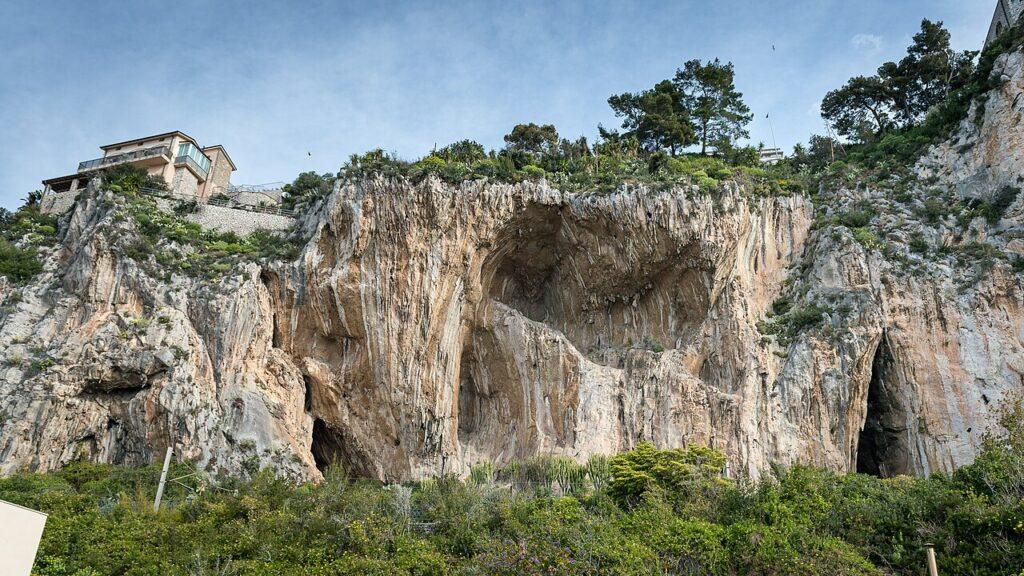
Neanderthals and Neolithic humans inhabited the Grimaldi Caves
Even older are the discoveries in the Balzi Rossi caves on the border with France. Skeletons of Neanderthals, including a 200,000-year-old hip bone, were found in the Grimaldi Caves.
Later burials also offer profound insights into the thoughts and feelings of early humans. One particularly moving example is that several skeletons from the Neolithic period were dusted with red ochre and decorated with shells from sea creatures before being laid to rest. Why? Perhaps it was an early symbol of status, spirituality, or love for the sea—we don’t know for sure. But the gesture remains touching to this day.
By the way, the tip about the caves comes from the Albergo Diffuso Relais del Maro in Borgomaro. At this hotel, you can stay in the heart of this charming village and experience authentic Liguria. The caves and the Museo Preistorico dei Balzi Rossi, where the finds are located, are about an hour’s drive away, making them ideal for an exciting day trip into the depths of history. (For electric car drivers, the sustainable hotel has an extra parking space with a charging station.)
Traces of the Illyrians: History on the Mediterranean
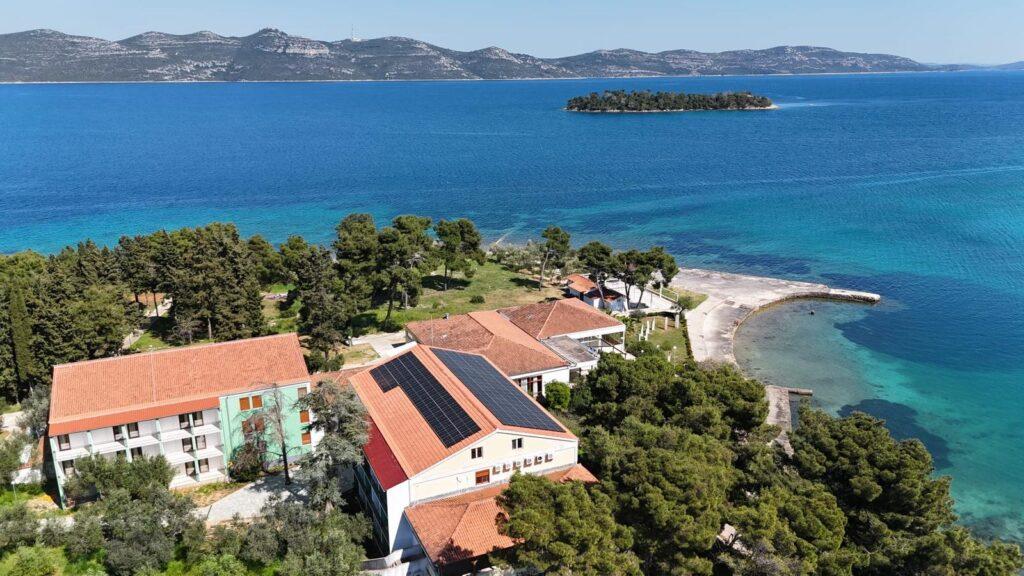
Traces of long-lost cultures can be found not only in the mountains and caves but also on Croatia’s sunny islands. The Dalmatian island of Iž, where our partner hotel, Korinjak, now invites guests to enjoy mindfulness, yoga, and plant-based cuisine, was once home to the Illyrians. Archaeological finds in Mali Iž reveal their settlements and fortifications—stone reminders of a time thousands of years in the past (until around 2000 BCE).
The Illyrians inhabited large parts of the western Balkans until the Romans arrived. Roman sources described them as “wild,” “freedom-loving,” and “difficult to subjugate.” They are considered the ancestors of today’s Albanians, though this has not yet been proven scientifically.
Time travel is over — for now
Our little archaeological journey was quite the adventure: from prehistoric caves to the Alps’ glaciers to the Balkan islands. Though they are from different times, places, and people, they all have one thing in common—their traces are still there. Maybe you got a little closer to one or two of these fascinating personalities today. Maybe you’re now inspired to visit them (or their graves and discovery sites) sometime in the future. They may have been dead for a long time, but that doesn’t matter. History lives on through our exploration of it.
P.S. In the next part, we will supposedly find ourselves in more orderly circumstances—we are going to visit the Romans!
Save the article on Pinterest so you can find it again anytime!
